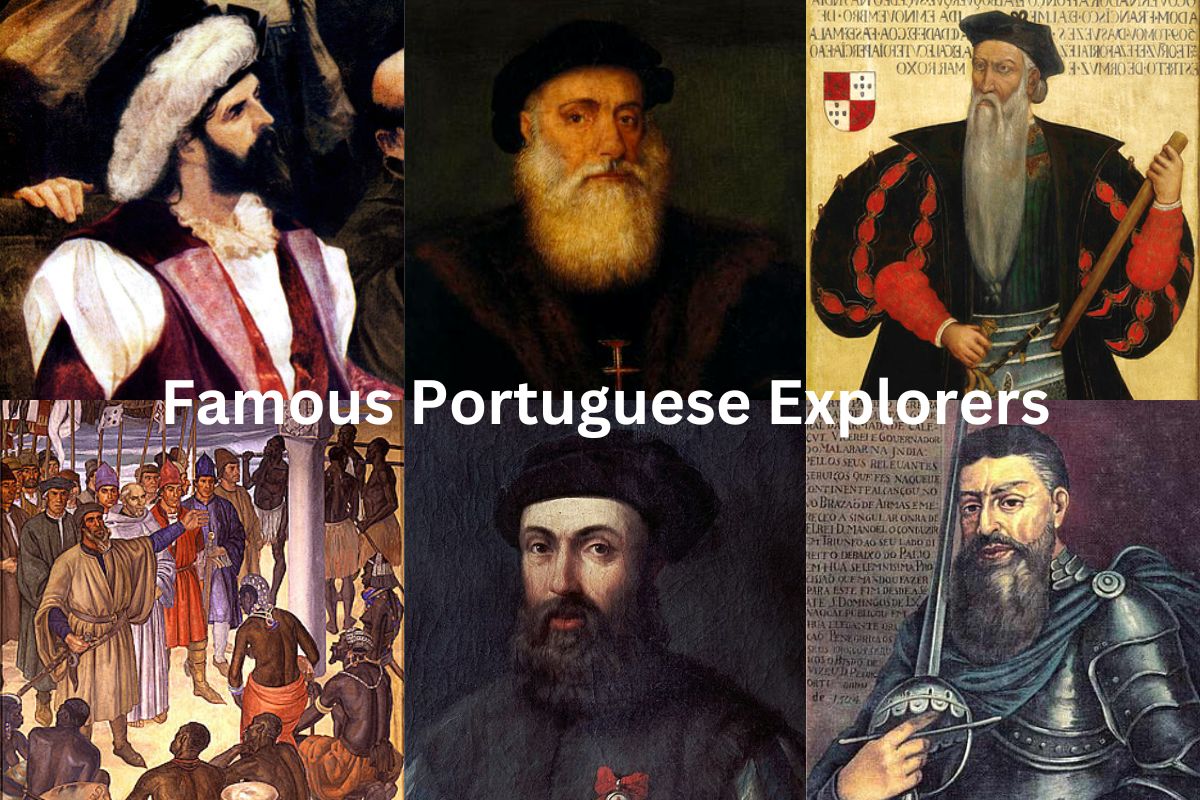During the Age of Exploration, which began in the 15th century and lasted until the 17th century, the Portuguese were recognized as one of the most accomplished maritime countries.
Portuguese explorers were crucial in expanding the known world and opening up new trade routes, both of which had a great impact on the economy of the world as a whole as well as the cultural exchange that took place around the world.
Vasco da Gama, Pedro Alvares Cabral, Ferdinand Magellan, and Bartolomeu Dias are only a few of the most well-known explorers who came from Portugal.
These explorers, along with many others, made important contributions to the exploration of Africa, Asia, and the Americas, and they were instrumental in Portugal’s rise to prominence as a major colonial power across the globe.
Famous Portuguese Explorers
1. Vasco da Gama
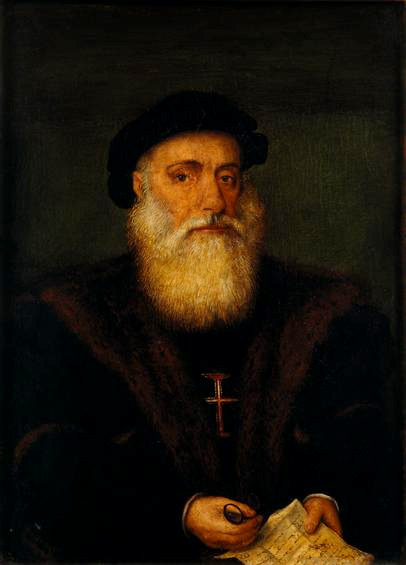
Vasco da Gama was a Portuguese adventurer who arrived in India by sea for the first time. He was born in 1469 in Sines, Portugal, and died in 1524 in Cochin, India.
In 1497, King Manuel I of Portugal sent da Gama on an expedition to find a sea route to India, which was known for its spices and other precious commodities. After several months of sailing, Da Gama set sail from Lisbon with a fleet of four ships and arrived in Calicut on India’s southwest coast.
Also Read: Famous Conquistadors
Da Gama’s expedition was difficult and dangerous, as he had to negotiate with hostile kingdoms and navigate treacherous waters. He did, however, establish business relations with the monarchs of Calicut and other Indian cities, and he returned to Portugal in 1499 with a cargo of valuable spices.
Da Gama returned to India in 1502 with a fleet of 20 ships and was named governor of Portuguese India.
He spent several years in India, establishing Portuguese colonies and commercial posts along the coast, and he was essential in expanding Portugal’s trade network and regional supremacy.
Vasco da Gama’s voyage to India was pivotal in that it opened a direct sea route between Europe and Asia, bypassing the overland commerce routes dominated by Arab and Italian traders. This resulted in increasing trade between Europe and Asia, as well as the emergence of Portugal as a major player in the global economy.
2. Pedro Álvares Cabral
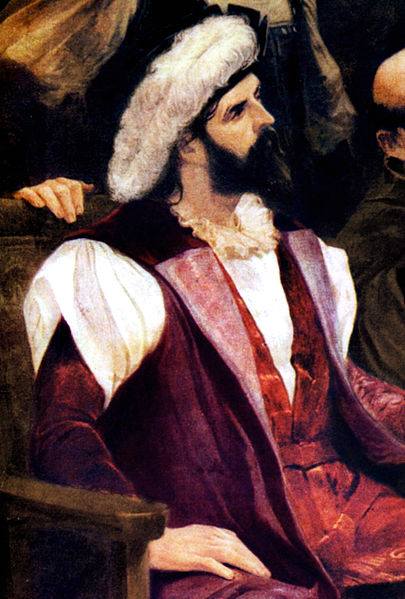
Pedro lvares Cabral was a Portuguese adventurer and sailor best recognized for discovering Brazil in 1500. He was born in 1467 or 1468 in Belmonte, Portugal, to a noble family. Cabral was well-educated and had previously participated in Portuguese voyages as a navigator.
Cabral was appointed by King Manuel I of Portugal to lead an expedition to India in 1500. On the trip, he sailed farther west than necessary to avoid the windless areas off the coast of Africa, and on April 22, 1500, he unexpectedly discovered the coast of Brazil.
Cabral claimed the region and dubbed it “Terra de Vera Cruz” for Portugal (Land of the True Cross). He continued his journey to India, where he developed trade links with local kings and conducted economic transactions.
Cabral returned to Portugal in 1501, and word of his discovery of Brazil quickly travelled across Europe. The Portuguese rapidly recognized the worth of the territory they had seized, and it became a major source of riches for the country in the following centuries.
Cabral is regarded as one of the most important explorers of the Age of Exploration, and his discovery of Brazil aided Portugal’s establishment as a powerful colonial power in the New World.
3. Ferdinand Magellan
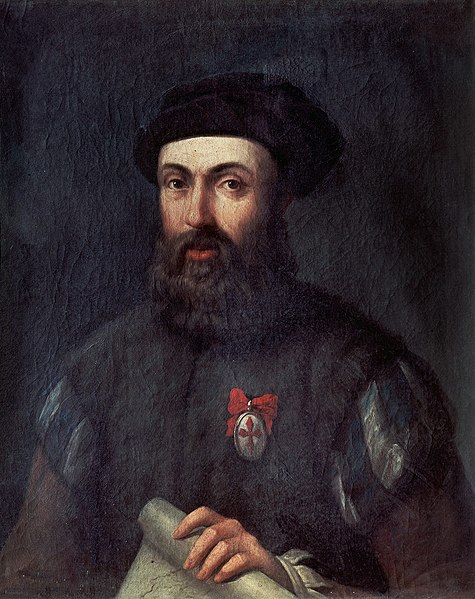
Ferdinand Magellan was a Portuguese explorer who led the first global trip. He was born in 1480 in Portugal and died in 1521 in the Philippines.
Magellan began his career as a sailor in Portugal, but he was dissatisfied with the Portuguese ruler and opted to offer his services to King Charles V of Spain.
With a fleet of five ships, Magellan set off from Spain in 1519, aiming to locate a western passage to the Spice Islands (modern-day Indonesia) and establish a new trade route to the East.
Also Read: Ferdinand Magellan Facts
Magellan and his men entered the Pacific Ocean via the strait that bears his name after sailing across the Atlantic Ocean. They sailed west amid storms and heavy waves until they arrived in 1521 in the Philippines. Magellan and his forces were attacked by native tribes, and he was killed in battle.
Despite the fact that Magellan did not complete the voyage, one of his ships, the Victoria, returned to Spain with a few survivors in 1522. Magellan commanded the expedition that circumnavigated the world, and the Victoria became the first ship to do it.
Magellan’s voyage was notable for demonstrating that the Earth was round and could be circumnavigated. His journey also established new trade avenues and established Spain as a major influence in New World exploration and colonization.
4. Bartolomeu Dias
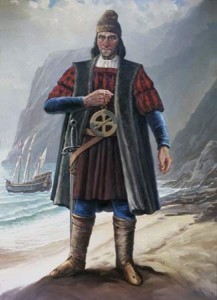
Portuguese explorer Bartolomeu Dias lived throughout the 15th and 16th centuries. Because he was the first European to sail around Africa’s southernmost tip, he is also credited with naming that area the Cape of Good Hope. A skilled navigator and sailor, Dias was born in the Portuguese region of Algarve in 1450.
Dias was given a mission by King John II of Portugal in 1487 to establish a water route to India. Following Africa’s western coast, Dias sailed south to its southernmost point, which he named “Cabo das Tormentas” (Cape of Storms). Since the discovery of this path provided Portugal with access to the Indian Ocean and the lucrative trade routes beyond, King John II later called it the Cape of Good Hope.
Dias resumed his journey to the east, but bad weather and a lack of enthusiasm from his crew caused him to turn around. In 1488, after completing his journey, he returned to Portugal and was greeted as a hero. Dias remained in the service of the Portuguese crown until his death in 1500, when he was killed in an expedition against the Moors.
A important milestone in the Age of Exploration, Bartolomeu Dias’s discovery of the Cape of Good Hope allowed for new trade routes between Europe and Asia and contributed to Portugal’s rise to global prominence as a colonial power.
5. João Rodrigues Cabrilho
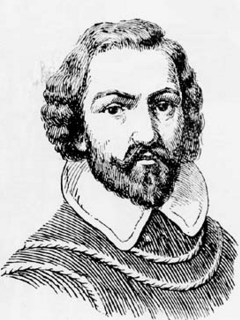
The Portuguese explorer Joo Rodrigues Cabrilho is revered for his 16th-century voyage around the coast of modern-day California. About 1499, Cabrilho was born in Portugal, where he received his education as a navigator and sailor.
The Viceroy of New Spain sent Cabrilho on an exploratory journey to the California coast in 1542. He embarked from the city of Navidad (in modern-day Mexico) with two vessels and a total of around 200 men.
To the north of modern-day San Francisco, up the Russian River, Cabrilho explored the California coast. Among of the places he found and gave names to are Point Conception, Santa Barbara, and San Diego Bay.
Strong winds, turbulent seas, and hostile Native American tribes all contributed to the perilous journey that Cabrilho endured. Cabrilho was injured on the journey and passed away in early 1543, not long after his return to Mexico.
It was the first European exploration of the California coast and laid the path for future expeditions, but his journey had enormous repercussions for European exploration of the Americas.
Today, we honor Cabrilho as a pivotal person in California and American history. The Cabrillo National Monument and Cabrillo College are only two of the many California structures and institutions that bear his name.
6. Gaspar Corte-Real
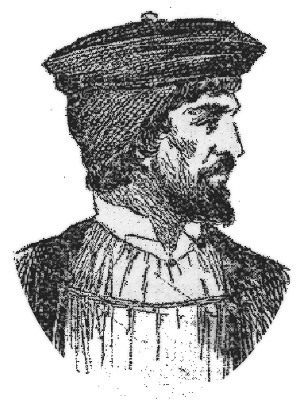
The Portuguese explorer Gaspar Corte-Real lived between the 15th and 16th century. In the early 16th century, he is best known for exploring the coasts of Newfoundland and Labrador, as well as Greenland. Corte-Real was born around 1450 in Portugal to an aristocratic family.
Corte-Real undertook multiple expeditions to the New World for the Portuguese crown. In the year 1500, he explored the Greenland shore and founded a small village there.
In 1501 and 1502, he returned to the region twice more in search of a westward path to Asia. On these voyages, he also visited the coasts of Newfoundland and Labrador and engaged in commerce with the native inhabitants.
The final expedition of Corte-Real and his men occurred in 1502, and they were never heard from again. Some historians believe he reached the Pacific Ocean or even Asia, while others say he drowned at sea or was killed by the native peoples he encountered.
Gaspar Corte-Real is acknowledged as a major character in the history of Portuguese exploration of the New World, notwithstanding the mystery surrounding his final expedition. His journeys contributed to the expansion of the known globe and provided Portugal with new commercial channels.
Also, he is remembered for his interactions with the native peoples of Newfoundland and Labrador, since his notebooks and reports provide vital insight into their cultures and way of life.
7. Diogo Cão
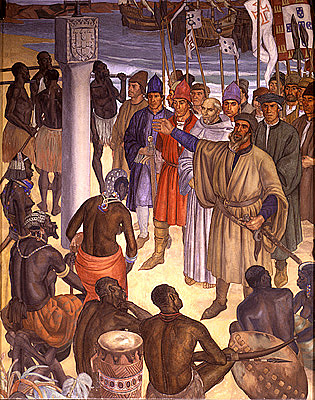
During the 15th and 16th centuries, the Portuguese explorer Diogo Cão made his mark on the world. His explorations of the Congo River and the west coast of Africa are widely credited as the first by a European. Cão was a Portuguese navigator and sailor who was born about 1452.
When King John II of Portugal wanted to learn more about the western coast of Africa, he turned to Cão, who led a voyage there in 1482. They traveled down the coast of what is now Angola, making friends with the local monarchs and trading for luxury commodities like ivory and gold. Along the coastline, he set up stone pillars and crosses to demarcate Portuguese dominion.
The discovery of the Congo River is considered Cão’s crowning achievement. He cruised up the river for a while and made friends with the locals, who he said were kind and inviting. Moreover, Cão sailed down the coast of what is now Namibia and South Africa, where he met the local Khoisan population.
In 1485, Cão embarked on a second journey, during which he built additional pillars and crosses from stone along the shoreline. His group ran into trouble with the locals, though, and lost numerous men as a result. No further news about Cão suggests he did not return from the mission.
The discoveries and new trade routes made possible by Diogo Cão’s expeditions greatly benefited Portugal. His forays along the Congo River were especially crucial since they prepared the way for subsequent Portuguese exploration of central Africa.
His legacy lives on today as a significant one in the annals of both Portuguese and African exploration.
8. Afonso de Albuquerque
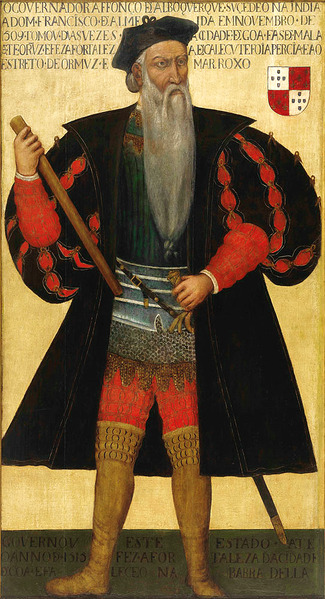
Throughout the 15th and 16th centuries, Afonso de Albuquerque was a Portuguese naval commander. He is most remembered for securing Portuguese hegemony over the Indian Ocean and the Spice Islands. Albuquerque was born in 1453 in Portugal to a wealthy family.
During the Portuguese conquest of Morocco in the 1470s and 1480s, Albuquerque rose to prominence as a soldier. He was named governor of Portuguese India in 1503, a position he held for six years.
Throughout his reign, he strengthened Portuguese authority over the Indian Ocean and erected a series of strategically vital forts and trading posts along India’s, Malacca’s, and the Persian Gulf’s shores. He was also an important figure in the capture of Goa, which became the capital of Portuguese India.
Albuquerque’s most notable victory was the conquest of the Spice Islands, which were the world’s only source of nutmeg and mace at the time. In 1511, he launched an expedition to the islands and successfully seized the towns of Malacca and Banda, giving Portugal a long-term monopoly on the spice trade.
Albuquerque died in 1515, yet his influence as a Portuguese naval leader and explorer lives on. His strategic vision and military tactics cleared the path for Portuguese development in the Indian Ocean, establishing Portugal as a world colonial power. He is also remembered for his contributions to Asia and the Spice Islands exploration.
9. Duarte Pacheco Pereira
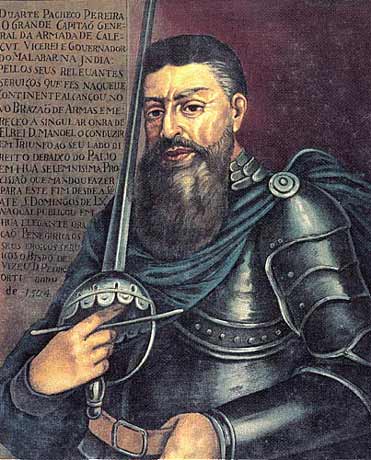
Duarte Pacheco Pereira was a 15th- and 16th-century Portuguese explorer, soldier, and writer. He is well-known for his contributions to the exploration of Africa’s west coast and the Atlantic Ocean. Pereira was born in 1460 in Portugal and trained as a navigator and sailor.
Throughout the late 15th century, Pereira was a member of multiple Portuguese voyages to Africa and Brazil. He is best remembered for his role as a military leader in the Portuguese invasion of the Kingdom of Kongo in the early 16th century.
Pereira is well known for his publications, which include a navigation treatise titled “Esmeraldo de Situ Orbis” (Emerald of the Situation of the World). This work is regarded as a masterpiece of 15th-century Portuguese literature and contains useful information about the condition of geography and navigation at the period.
Pereira also published a detailed account of Portuguese exploration of Africa in his chronicle of his journeys to Africa.
Pereira’s reputation has been eclipsed by his role in the slave trade, despite his contributions to exploration and writing. He is believed to have taken part in the capture and selling of African slaves, and his navigation treatise includes advice on how to capture slaves on expeditions to Africa.
Despite this, his writings and explorations contributed to the expansion of the known globe and set the path for future Portuguese explorers.
10. Nicolau Coelho
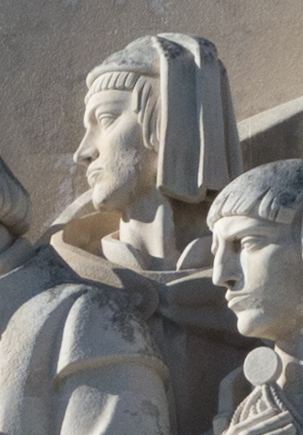
In the 15th and 16th centuries, Nicolau Coelho was a Portuguese explorer. He is most remembered for his role in Vasco da Gama’s 1497-1499 trip to India, which was the first European naval voyage to India. Coelho was born in 1464 in Portugal and trained as a navigator and sailor.
Coelho was an important navigator on Vasco da Gama’s voyage to India. He traveled aboard the flagship So Gabriel and was instrumental in the voyage’s success. Coelho assisted in navigating the perilous waters around the Cape of Good Hope and was instrumental in establishing trading links with the native rulers in India.
Coelho also discovered other islands in the Indian Ocean during the journey, including the Comoros and Socotra. After returning to Portugal, he continued to serve the Portuguese crown, and he conducted several more expeditions to India and Africa over his career.
Nicolau Coelho’s participation in Vasco da Gama’s journey contributed to the expansion of the known globe and opened up new commercial channels for Portugal.
His achievements to navigation and exploration paved the path for future Portuguese explorers and helped establish Portugal as a world colonial power. Coelho is acknowledged as a pivotal figure in Portuguese exploration and navigation history.
